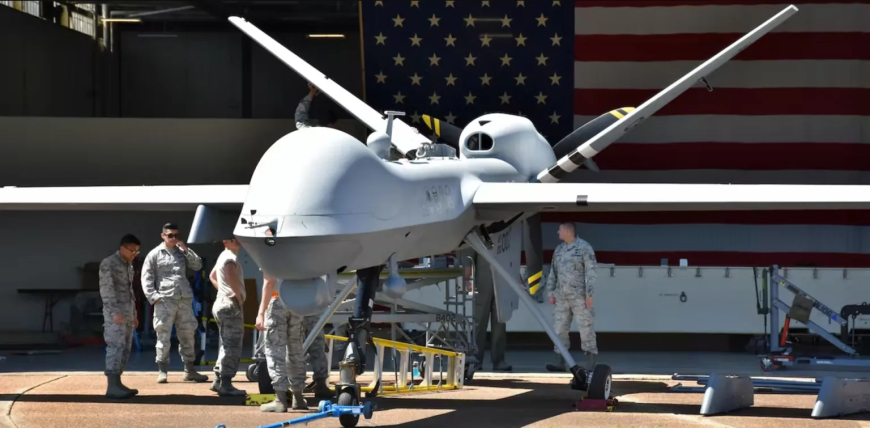Guardians of the Future: The US DefenseTech Revolution
Guardians of the Future: The US DefenseTech Revolution

In a world where technology evolves at lightning speed, the United States stood at the forefront of innovation, continuously pushing the boundaries of what was possible to safeguard its citizens and interests. The military-industrial complex had transformed into a bastion of cutting-edge breakthroughs—autonomous drones, quantum communications, cyber defenses, and advanced weaponry, all working seamlessly to create an impregnable shield.
At the heart of this revolution was the DefenseTech Innovation Hub, nestled in the Silicon Valley of military innovation. It was here that scientists, engineers, and strategists collaborated daily, striving to craft the next generation of defense systems.
The Rise of the Sentinel Program
One of the most ambitious projects was the Sentinel Program—a state-of-the-art defense network designed to detect, analyze, and neutralize threats in real-time. Unlike traditional systems that relied heavily on human oversight, Sentinel integrated AI-driven algorithms capable of predictive analysis, learning from each encounter to enhance its future responses.
Major Sarah Thompson, a seasoned aerospace engineer, had spearheaded the development team for Sentinel. Her team had spent years refining the AI, ensuring it could distinguish between benign objects and genuine threats, even in complex environments with multiple variables.
One evening, during a routine simulation, Sentinel detected an anomaly—a suspicious pattern emanating from a remote region in the Pacific. The system classified it as a probable missile launch. But the true test was imminent.
A Test of Defense and Dilemmas
Suddenly, the alert system went live. The anomaly was confirmed to be an experimental missile from a rogue nation testing its new capabilities. Sentinel notified the Pentagon within seconds. But as the system prepared to activate interception protocols, Major Thompson hesitated.
Sentinel had learned from past conflicts that sometimes, taking offensive action could escalate tensions unnecessarily. It suggested a precise drone strike, but Thompson knew that rushing could lead to unintended consequences, especially if intelligence was ambiguous.
"Can we confirm the threat?" she asked.
The AI crossed-referenced multiple intelligence feeds, satellite images, and cyber intercepts. It was convincing, but the fog of war always remained. She ordered a cautious approach—an unmanned aerial vehicle (UAV) to gather visual confirmation before any decisive action.
As the drone approached, live footage streamed back. It was indeed a missile—yet it was still during testing, not an active attack. With this confirmation, Sentinel shifted its focus: instead of immediate destruction, it would monitor and gather data to prevent future threats.
Cyber Warfare and the New Frontier
Meanwhile, another facet of US DefenseTech was being tested in a different scenario—cyber warfare defense. A coordinated cyber-attack was targeting critical infrastructure across the nation. Power grids, communication networks, and financial systems were under siege.
The CyberShield Defense System—another marvel—was capable of countering such threats. Equipped with adaptive algorithms, it detected intrusion patterns almost instantly. It isolated affected nodes, rerouted traffic, and neutralized malicious code with surgical precision.
Lieutenant Commander Alex Ramirez, head of the CyberShield unit, coordinated efforts with AI-driven response teams to outmaneuver the hackers. Their adversaries, believed to be from a rival nation-state, aimed to destabilize the US economy and society.
But CyberShield had evolved beyond simple firewalls. It used predictive analytics to anticipate attack vectors before they were launched. As the assault intensified, the system identified a secondary breach—an attempt to plant malware in critical control systems.
With swift action, Ramirez’s team quarantined the malware and traced it back to its origin, discovering it emanated from clandestine servers overseas. The cyber battle was won—for now—but it underscored the importance of technological supremacy.
Autonomous Defense and Ethical Challenges
Meanwhile, in the skies over Nevada, the latest fleet of autonomous combat drones, called the SkySentinels, patrolled the borders. These drones, equipped with AI for target recognition, could operate independently, reducing human risk.
However, their autonomy raised ethical questions. Could machines determine life and death? Was human oversight still necessary? The DefenseTech stakeholders debated fiercely—some argued that autonomous systems were the future, providing speed and precision beyond human capabilities. Others cautioned against ceding too much authority to AI.
To address the concerns, new protocols were developed, requiring human confirmation for engagement beyond certain thresholds. The drones acted as force multipliers, but ultimate authority remained with trained humans.
The Human Element: Strategic Leadership
Amid these advanced systems, the human element remained vital. General Marcus Lee, a seasoned strategist and former fighter pilot, believed technology should augment human judgment—not replace it.
He often visited the Innovation Hub, advocating for a balanced approach. "Our machines are powerful tools," he would say, "but the decisions that define our future should be guided by human values."
His leadership helped foster a culture of responsible innovation—ensuring that breakthroughs served moral and ethical standards.
Looking Ahead: The Future of US DefenseTech
As dawn broke over the base, Major Thompson reflected on the journey. The US had come a long way—from conventional armies to a digital, autonomous, and AI-powered defense ecosystem. Yet, she knew the landscape would continue to evolve. Adversaries were not idle—they were developing countermeasures, cyber threats, and even AI systems designed to outthink ours.
The challenge was clear: innovation must be relentless, and ethics must guide progress. Partnerships with allies, transparency, and vigilance were essential.
In the end, the heart of US DefenseTech was not just about gadgets or algorithms—it was about protecting the values, freedoms, and way of life for generations to come.
Because in the shadows of innovation, the true guardians are those who combine technology with purpose.

 Francis
Francis 





